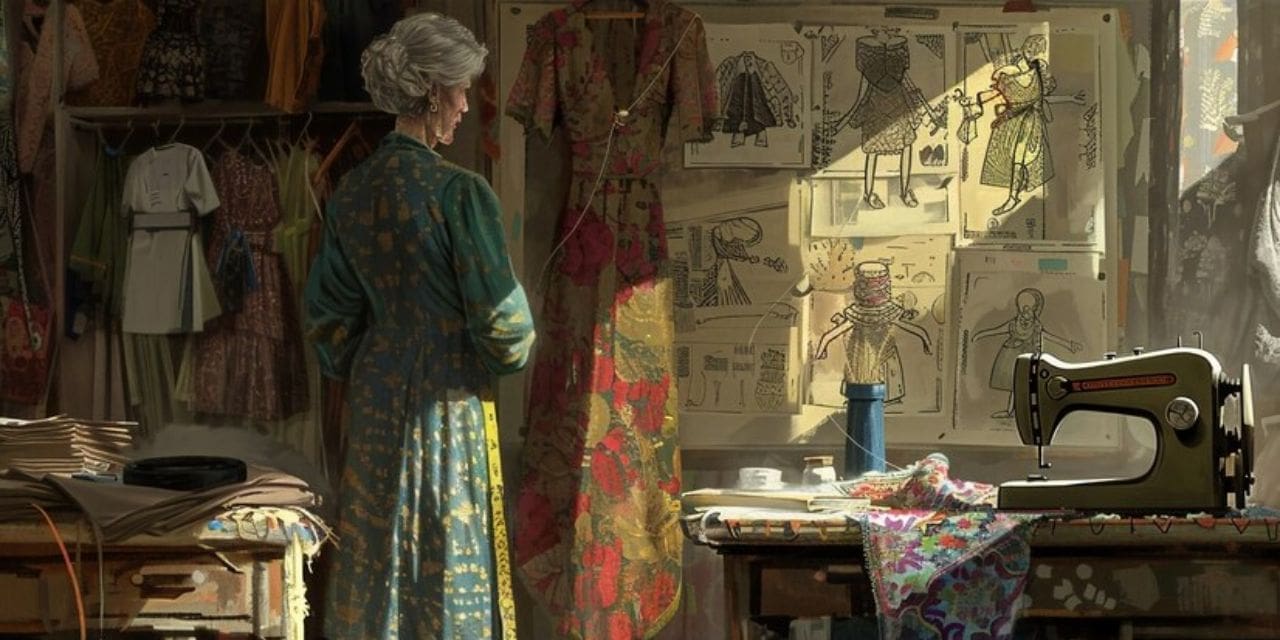The history of textiles spans millennia, beginning with the earliest perceived texture made with the guidance of ancient societies. Archaeological findings show that historic civilizations just like the Egyptians and Mesopotamians wove textiles from natural fibers which include flax and wool as early as 5000 BCE.
These materials served as a dress as well as images of status and social distinguishing proof. Over the years, advancements in spinning and weaving strategies caused more elaborate designs and sturdy fabrics.
The Industrial Revolution marked a sizable turning factor within the records of textiles, with the mechanization of manufacturing main to mass availability and affordability. Searching ahead, the future of the fashion industry hinges on sustainability, innovation in artificial materials, and digital technology influencing fabric design and production.
What Is The Brief History Of Textiles?
The history of textiles spans millennia, beginning with the earliest recognized examples courting lower back to prehistoric instances. Initially, textiles were made from natural materials like flax, wool, and cotton, utilized by historical civilizations along with the Egyptians, Greeks, and Romans.
The discovery of the spinning wheel within the center a long time ago revolutionized production, observed via the economic Revolution’s mechanization in the 18th century, leading to mass production and international change in textiles.
The nineteenth century noticed further improvements with the improvement of artificial fibers like nylon and polyester. Today, textiles are crucial to fashion, industry, and everyday existence, reflecting each technological progress and cultural tradition the world over inside the history of textiles.
What Is The History Of The Word Textile?
The phrase fabric originates from the Latin term textiles, meaning woven, and includes a rich history courting returns to historic civilizations. Early proof of fabric production dates to around 34,000 BCE with fragments determined in Europe, suggesting early human beings used plant fibers to create rudimentary textiles.
Historical Egyptians and Mesopotamians extensively advanced textile strategies, spinning fibers like flax and weaving problematic fabric. In China, the discovery of silk production around 2700 BCE revolutionized the enterprise, spreading silk exchange alongside the Silk Avenue.
At some stage in the economic Revolution, mechanization in Europe converted textile manufacturing, mainly to mass production. Nowadays, textiles remain integral to global economies and cultures, reflecting a continuum of innovation and craftsmanship in the course of the history of textiles.
What Is The Oldest Known Textile?
One of the oldest recognized textiles is the linen fabric observed in a cave in Georgia, relationship back to 34,000 years ago. This discovery offers indispensable insights into the early history of textiles, showcasing the ingenuity of prehistoric people in weaving fibers from flax flowers into material.
Linen, recognized for its electricity and breathability, played an enormous position in historic societies throughout Eurasia and Africa, serving each practical and symbolic functions. Its renovation in a cave environment underscores the sturdiness of textile materials and highlights their significance in human cultural evolution.
This discovery represents a pivotal moment in the archaeological exploration of the history of textiles, revealing early fabric manufacturing lengthy earlier than the appearance of written facts.
What Is The Brief History Of Textile Printing?
The records of fabric printing date back over 2 millennia, originating in historic China around 220 AD during the Han Dynasty. Initially, patterns were hand-stamped onto fabric with the usage of wooden blocks. This method spread to India and different parts of Asia, where complicated designs like paisleys and floral motifs became popular.
Within the twelfth century, Muslim investors introduced fabric printing to Europe via Spain.
By way of the seventeenth century, Europe had developed its strategies, along with copperplate printing and woodblock printing. The economic Revolution within the 18th century revolutionized textile printing with the discovery of curler printing machines, enabling mass manufacturing of revealed fabric.
Whilst Did Humans Start Using Textiles?
These early civilizations laid the inspiration for textile production, refining strategies of spinning and weaving to create durable and flexible fabric. In Egypt, linen became a staple fabric, prized for its comfort and durability in hot climates. Mesopotamians superior fabric technology with improvements just like the vertical loom, enhancing manufacturing performance and fantastic. Meanwhile, in China, the cultivation of silk from silkworms brought about the introduction of high-priced fabric reserved for the Aristocracy and exchange alongside the Silk Avenue.
During antiquity and into the center of a while, textiles played pivotal roles in cultural identification, trade, and monetary prosperity. The craftsmanship and artistry involved in dyeing and weaving techniques increased, influencing style developments and societal hierarchies.
How Did Textile Manufacturing Evolve?
Textile manufacturing advanced extensively. historical civilizations used strategies like hand-weaving and spinning, which endured into the center ages. The commercial Revolution in the 18th and 19th centuries added mechanization, enabling mass production of textiles.
How Did The Industrial Revolution Impact Fabric Production?
The Business Upset, which started in the past 18th year, changed texture fabricating on an overall scale. Innovations such as the spinning jenny, strength loom, and mechanized cotton gin considerably extended the speed and performance of fabric manufacturing. The accessibility of reasonable textures changed style, making clothing more available to the majority and filling purchaser interest.
What Function Did Textiles Play In Trade And Cultural Alternate?
Textiles performed an indispensable position in trade and cultural trade at some stage in history. Silk, originating in China, has become an especially sought-after commodity along the Silk Road, influencing cultural change between East and West. Indian textiles like calico were exported globally, shaping style traits and economies.
Overview Of The Content
The history of textiles displays human ingenuity and cultural trade over millennia. From early hand-weaving and natural dyeing strategies to the Industrial Revolution and modern digital printing, textiles have evolved along with technological improvements and cultural shifts. Fabrics no longer only served realistic desires but also became symbols of repute, identification, and creativity.
Nowadays, the fabric industry keeps innovating, balancing traditional craftsmanship with sustainable practices and virtual technology. Perception of this journey illuminates how textiles have woven themselves into the cloth of human records, shaping societies and economies throughout the globe.

